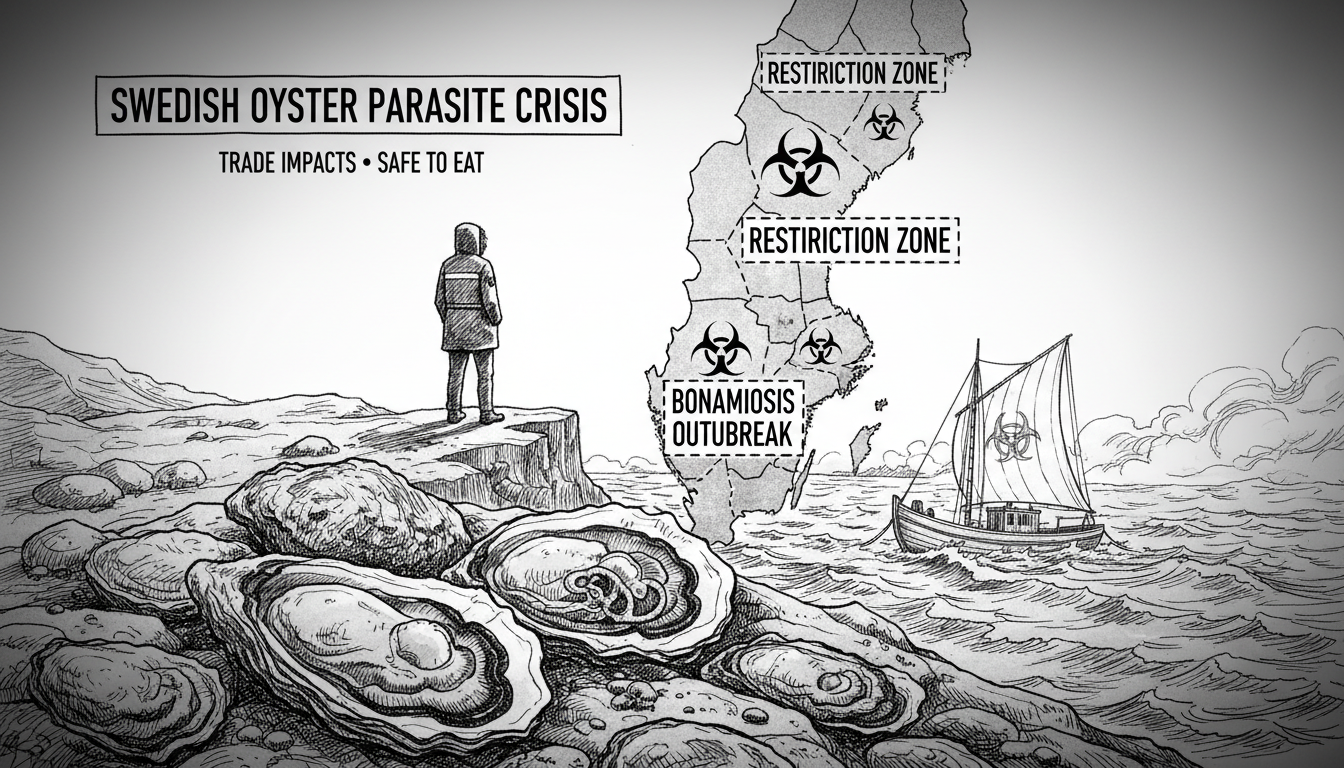A dangerous parasite has infected oysters along Sweden's west coast. Authorities discovered the contamination during routine testing in early November. This marks the first confirmed case of bonamiosis in Swedish waters. The parasite specifically affects wild European oysters near Kalvön in Tanum municipality.
Agricultural officials established immediate restriction zones to contain the outbreak. These zones prevent oyster farmers from moving shellfish between different waters. Harvested oysters and fishing equipment cannot be returned to the sea. These measures aim to stop the parasite from spreading to unaffected areas.
Bonamiosis poses serious threats to oyster populations. The disease causes secondary infections and increases mortality rates. Officials express concern about the economic impact on coastal communities. Oyster farming represents an important industry for Sweden's west coast region.
The outbreak could damage Sweden's international shellfish trade. The country previously maintained disease-free status for this parasite. Losing this status would harm export opportunities. One official explained the consequences for local businesses. "This could have major consequences for facilities holding oysters on the west coast that trade with other countries," said Lovisa Åkerström, an infection protection investigator with the Swedish Board of Agriculture.
Sweden's seafood safety system responded quickly to the discovery. The country maintains strict monitoring programs for shellfish health. Regular testing helps detect problems before they become widespread. This proactive approach likely prevented further contamination.
Consumers need not worry about eating affected oysters. The parasite does not make oysters dangerous for human consumption. However, the economic impact on fishermen and aquaculture businesses could be substantial. Many small operations depend entirely on oyster harvesting.
This situation mirrors similar outbreaks in other European countries. Norway and Denmark have faced comparable challenges with shellfish diseases. Climate change and warming waters may contribute to increasing parasite problems. Marine biologists monitor these developments closely.
The restrictions will remain until authorities confirm the parasite has been contained. Ongoing testing will determine when the zones can be lifted. Meanwhile, oyster farmers must adapt their operations to comply with new regulations. The coming months will reveal the full impact on Sweden's oyster industry.

